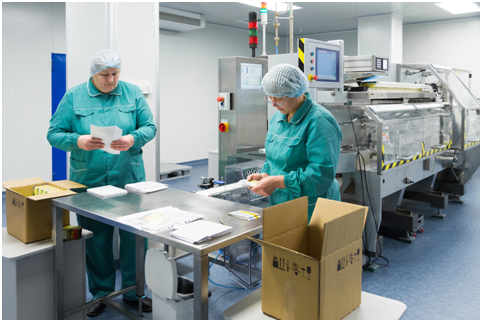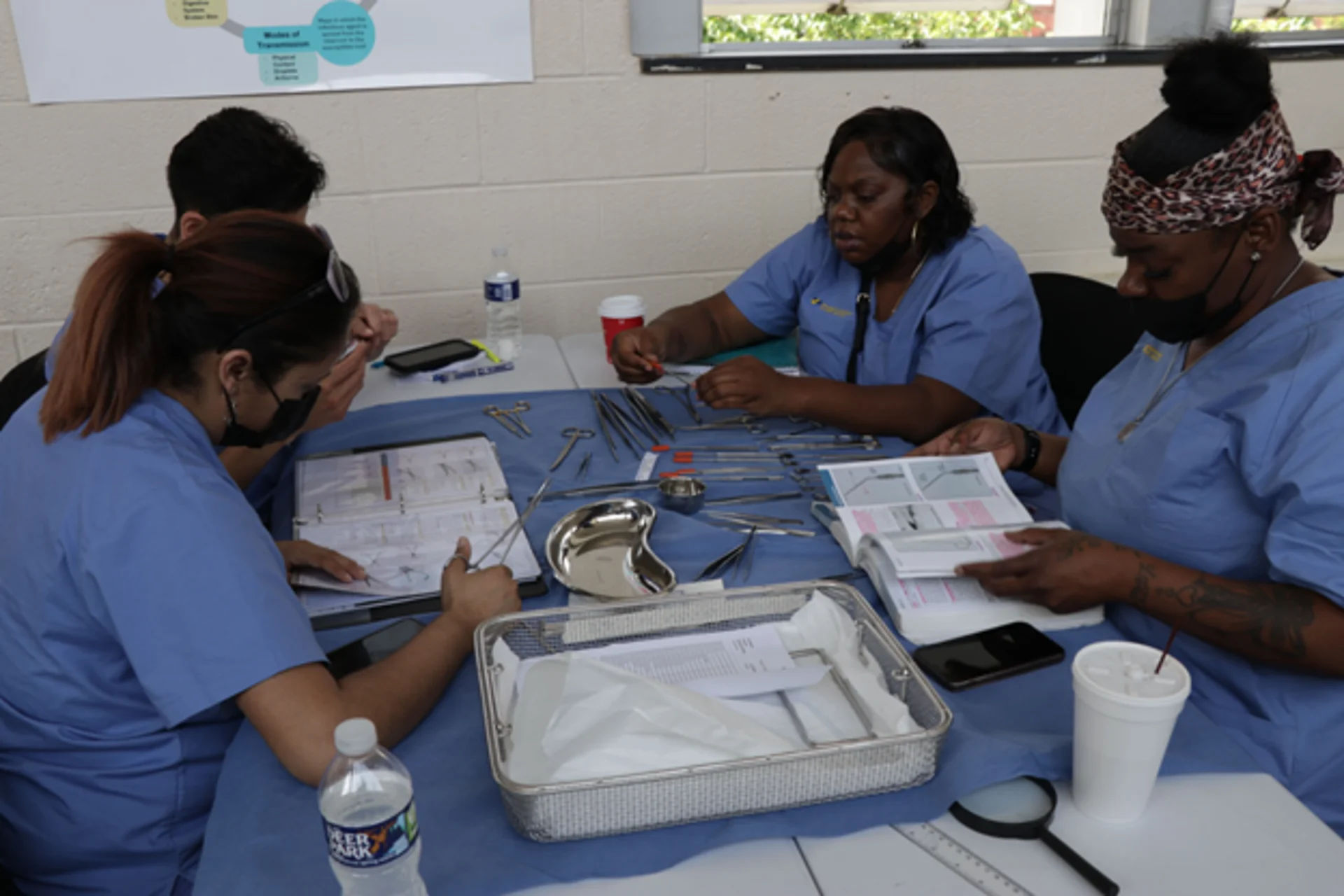Something is humbling about walking into the back corridors of a hospital. The lights there are dimmer, and the air is a bit heavier. Yet, that’s where the most crucial task of a hospital happens. You can hear the soft hum of sterilizers, the clink of trays, and quiet conversations that never reach the frontlines. That’s the world of sterile processing technician jobs — an invisible but vital lifeline of every hospital.
When things get busy, that room doesn’t stop. It runs day and night. People barely sit. Machines run nonstop. It’s a rhythm that feels endless during peak seasons, and that’s when burnout shows up, slowly, like fog creeping in.

There’s a quiet kind of pride among those who work in sterile processing technician jobs. They know that every clean instrument means a safer surgery, and that every tray prepared correctly could save a life. Yet, in peak times — such as flu surges, trauma season, or even holidays when staff shortages occur — the pride starts competing with exhaustion.
Shifts stretch longer than planned. Lunch breaks become optional. Some days, the trays feel like they multiply when no one’s looking. The pressure builds not because of carelessness, but because of how much everyone cares. And that’s the hardest part.
When your work holds so much responsibility, it’s not just physical tiredness that wears you down — it’s the mental weight of knowing mistakes aren’t allowed. Still, there’s something to learn in the middle of it all: how to pause, how to protect your energy, and how to remind yourself that you’re not a machine. You’re human.
There’s this moment every technician knows — when you look at the clock and realize it’s already midnight, and you still have trays stacked taller than your station. You tell yourself, “Just one more round,” but the “one more” never ends. That’s what burnout feels like—the blur between dedication and depletion. During those intense periods, sterile processing technician jobs demand both precision and patience.
The surgeons upstairs rely on the timing down here. Every minute matters, every sterilization cycle counts. And yet, nobody outside that room really sees the rush. That invisibility can sting. But it’s also what makes this profession so deeply honorable. You don’t do it for applause; you do it because patients depend on you — even if they never know your name.
Balance doesn’t look the same for everyone. For some, it’s a five-minute break by the supply rack with a cup of coffee. For others, it’s switching off the mental noise after a shift. In sterile processing technician jobs, you don’t get much room for error — but you can make room for yourself.
We’ve seen technicians quietly cover for each other — one finishes trays while the other takes a quick breather. That’s what keeps everyone sane during the busiest months. If you ever feel like you’re running on autopilot, it might be time to re-ignite your purpose. Enrolling in one of the best sterile processing training programs in the USA can remind you of the science and skill behind what you do. It’s not just training — it’s rediscovery.

Sometimes you can’t change how fast the hospital moves. But you can change how you move through it. Eat when you can, not when it’s convenient. Drink more water — even if it means running to the restroom during your shift. Move your shoulders. Adjust your stance. These small things matter.Organizing trays smarter helps, too.
Efficient setups reduce chaos. It’s not glamorous, but even changing the way you label instruments can give you breathing room. And if you’re thinking long-term, consider completing your central sterile processing certification requirements. It opens new roles, often with better hours and higher respect. It’s not just a career move — it’s a mental reset.
After months of non-stop work, you start to forget why you began. That’s when learning steps in as a lifeline. Taking one of the top sterile processing training programs in the USA can significantly shift your perspective. It’s not about more homework — it’s about reconnecting with your craft. You begin to understand how vital your role truly is, from infection control to patient safety. You see the bigger picture again.
And if you’re still finding your footing, learning how to become a central sterile processing technician can give you direction. Something is grounding about knowing the whole path ahead — the certifications, the skills, the growth. It turns uncertainty into purpose.
Let’s be honest — no one joins this field to get rich. However, the salary for sterile processing technicians has increased, particularly for certified professionals. And that matters. Fair pay gives breathing room, both mentally and emotionally. It allows you to take care of your own life with the same diligence you give to others.A good paycheck doesn’t just buy comfort — it buys dignity.
It lets you know that your hard work is recognized. Combine that with good management and simple appreciation, and burnout doesn’t stand much of a chance. I’ve seen hospitals where supervisors take the time to thank technicians personally after a tough week. A five-minute acknowledgment does wonders. It reminds you that your work isn’t invisible after all.
There’s real healing in mentorship. When someone new joins the department, teaching them how to wrap, sterilize, or document properly gives your work meaning again. It reminds you how much you’ve learned and survived. If you’ve been through the burnout cycle yourself, guide others through it. Tell them how to set boundaries and recognize the signs early.
In return, their enthusiasm might just remind you why you fell in love with the field in the first place. On the other side, if you’re still learning how to become central sterile processing technician, don’t be afraid to ask questions. Ask the seniors how they manage to get through the toughest days. There’s wisdom in every tired smile in that room.
People in healthcare tend to give everything — time, sleep, patience — until there’s nothing left for themselves. But the truth is, the system runs better when you’re okay, too. Investing in yourself might mean applying for a raise or finally finishing those central sterile processing certification requirements. It might mean saving up for one of the best sterile processing training programs in the USA or taking a weekend to rest without guilt.
These aren’t luxuries. They’re necessary. Because every instrument you clean, every tray you wrap, represents a life on the other side of the OR. And the person doing that work — you — deserves the same care you give through your hands.
If you’ve been in the same pattern for months and the exhaustion feels heavy — the kind that sleep can’t fix — it’s okay to step back. Hospitals now offer counselors and peer support systems. Use them. You don’t have to handle burnout alone. And if the exhaustion feels like it’s eating away at your joy, maybe it’s time to move up or move out — shift into teaching, management, or training roles.
Once you meet the central sterile processing certification requirements, the field opens wide. Some even move into roles mentoring new technicians on how to become central sterile processing technician — carrying the torch forward, without burning themselves out again.
At the end of every long day, try to remember why you started. Maybe you were fascinated by the precision. You likely liked working behind the scenes. Or maybe you wanted to be part of something that mattered. Whatever it was, it’s still there. Beneath the exhaustion, beneath the noise — it’s still there.
Sterile processing technician jobs aren’t easy, but they’re noble. They carry quiet courage. Every tray you prepare, every cycle you monitor, ripples outward to a patient’s safety, a family’s relief, a surgeon’s trust. That’s no small thing.
This field asks a lot. It tests patience, stamina, and heart. But burnout isn’t a sign that you’re weak — it’s a sign that you’ve been strong for too long without rest. Take breaks. Learn something new. Continue to grow through the best sterile processing training programs in the USA. Speak up for a fair salary for sterile processing technicians. Keep your certifications up to date.
But most importantly, give yourself grace. Because every clean instrument you prepare holds the quiet proof of your dedication — unseen, but absolutely vital. And when the next peak season comes (because it always does), you’ll face it again — wiser, steadier, and ready, not just to work, but to endure well.
Read More: